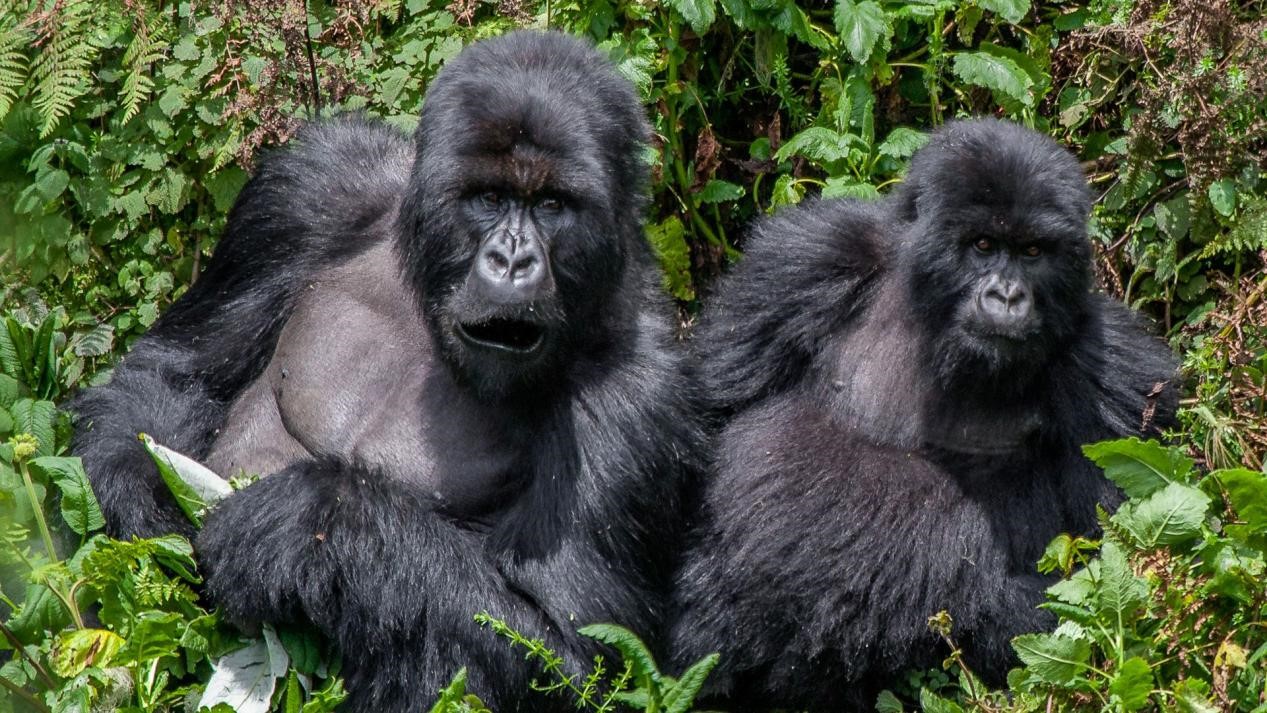
The best regions for Uganda Gorilla Chimp Trekking
The best regions for Uganda Gorilla Chimp Trekking. These include Bwindi Impenetrable Forest National Park, Kibale Forest National Park. Also, there is Murchison Falls National Park and Queen Elizabeth National Park. etc
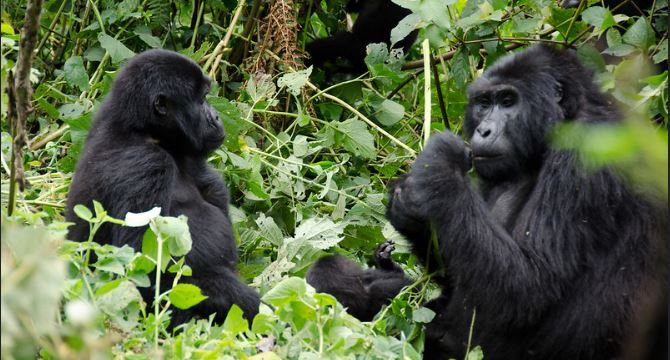
Bwindi Impenetrable National Park
A majestic forest home to half of the world’s population of mountain gorillas.
In the southwestern corner of Uganda sits the most biologically diverse forest in Africa – Bwindi Impenetrable National Park. The forest is part of the Rift Valley Mountains that stretch over three countries – Uganda, Rwanda and the Democratic Republic of Congo – and the most famous reason to visit this group of forests is to see the mountain gorillas.
Half of the world’s population of gorillas in this park!
On a global scale, the number of mountain gorillas left in the wild is shockingly low, but Bwindi National Park protects an estimated 400 mountain gorillas – which is roughly half of the world’s population! Visiting Bwindi gives you the opportunity to trek through the forest to see one of the several habituated gorilla groups and this experience is a once-in-a-lifetime experience.
The park itself is one of the oldest in Uganda (dating back 25,000 years) and its diverse landscape homes approximately 120 mammals (including two species of elephants), several primate species (including mountain gorillas, baboons and chimpanzees), and around 350 species of birds. Depending on how long you stay, a visit to the park can combine all of the wildlife experiences, as well as experiencing the lush and vibrant flora and fauna of the park.

Gorilla trekking in Bwindi
The gorilla groups in Bwindi are all located in different areas of the park. Therefore, which gorilla group you see will depend on where you are staying in the park (northern or southern Bwindi) and how far you want to trek (some can be shorter hour walks, others can be full-day treks through the forest).
Across all of Bwindi National Park (the northern area of Buhoma and the southern area, the habituated gorilla groups include: the Bitukura group, the Oruzogo group, the Mubare group (also known as the M group and the first to become available for tourism in Uganda in 1993), the Habinyanja group (the H group), the Rushegura group (the R group), the Kyagulliro group, the Nshongi group, the Nkuringo group, the Mishaya group, the Bweza group, and the Busingye group.
The numbers in each family group
The numbers in each family group vary, but range between a smaller group of 6 to a larger group of 20. Each gorilla group has interesting relationships and unique stories, which your guide will explain during your trek through the forest. Some of these stories are pretty brutal, such as large silverbacks attacking and killing younger males who may currently, or in later years, pose a threat to his status.
To see the gorillas, you will need a park permit. Uganda sells 88 gorilla permits per day for Bwindi National Park for 11 gorilla groups, which works out to be a maximum of 8 people trekking to see one gorilla family at a time, accompanied by UWA (Uganda Wildlife Authority) guides. You must be over 15 years old to do a gorilla trek.
Cost of permits
The gorilla permits are currently selling at a cost of $700 per person. This is half the price of the neighboring country Rwanda, who charge $1,500 per person for a single gorilla permit.
Mountain Gorillas are an endangered species so, for this reason, it is crucial that permits are in place to protect and preserve their privacy. Permits also help to save mountain gorillas from diseases that can be caused by too many visitors or crowds. The money from the gorilla permits contributes to the conservation of both wildlife as well as the local community, which helps train the local guides and rangers who protect the park.
What you will need for your gorilla trekking safari
As a gorilla trek is usually a once-in-a-lifetime experience, it is important that you are aware of the rules and equipment required to make your trek as comfortable as possible. You will need your passport (for registration before trekking), trekking boots, a warm jacket for the cool early mornings, some waterproof jacket and trousers, thin gloves, a long-sleeved t-shirt, a hat, sunglasses, strong sun protection, mosquito repellent and money for tipping (for the ranger and the porters if used).
How it takes place
Before you depart for the gorilla trekking, there will be a morning meeting to run through some logistics and rules for the trek. The park trackers will go early in the morning to track the gorilla families, starting where they left them the previous day and communicate their location on radio call. You are then into groups of 8 to start your trek. This will take an average of around 2 and 5 hours and will possibly be on steep terrain. It is therefore important to have reasonable fitness and be free from any colds or flus.
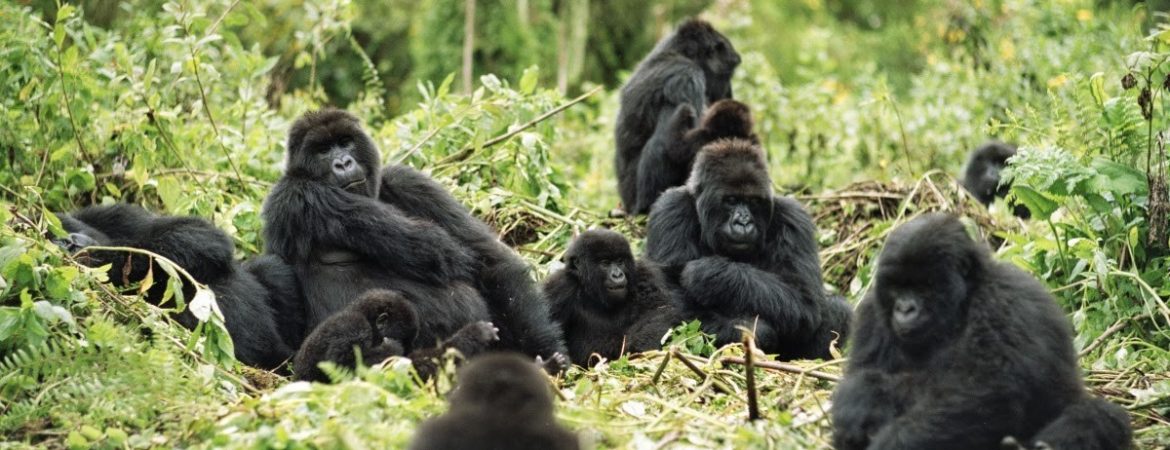
Kibale Forest National Park
A lush forest home to the habituated chimpanzees
Uganda has several forests and national parks in which chimpanzees can be found and the park you visit will depend on the experience you are wanting – whether that is a chimpanzee tracking experience, or a chimpanzee habituation experience. Habituated chimpanzees mean that they are accustomed to human presence and will not run off when they sense or see humans.
Chimpanzees in Kibale
Chimpanzees are the closest relatives to humans sharing about 98% of their DNA composition with humans. They are sociable animals and their groups can be comprised of anywhere between 10 and 100 members. They are very intelligent animals and have utilized traits and actions that have been passed on from generations, such as using rocks for crushing nuts and using empty pods for collecting water.
In Kibale, a chimpanzee trekking experience will allow you to spend approximately an hour with these mesmerizing primates. You will observe them swinging in trees, playing with one another and feeding around you – unfazed by your activity and presence. The group size is 6 people, accompanied by a guide of the Uganda Wildlife Authority (UWA).
Other primates in Kibale
As well as chimpanzees, Kibale Forest homes 12 other species of primates, including the black and white colobus monkeys, the red-tailed monkey and the grey cheeked mangabey, so definitely keep an eye out for these species’. Bird life is also exceptionally good in Kibale forest and the guides will be exceptional in spotting the different varieties and species.

If you are coming from Murchison Falls National Park, then you will fly into Kibale and then drive to your lodge. If you are coming from the southern area (such as Queen Elizabeth National Park or Bwindi National Park), then you can drive up into Kibale.
Accommodation
For accommodation, there are several lodges you can stay in during your stay in Kibale National Park. These include Primate Lodge, Papaya Lake Lodge and Kyaninga Lodge. You can either drive or fly into Kibale Forest. Just like gorilla permits, chimpanzee permits need to be beforehand and you can get these through your tour operator or travel agent. The cost of a single chimpanzee permit is $150 per person and the trek can be either morning or afternoon. Although you are restricted to one hour with the chimpanzees, the walk can be much longer as there is other flora and fauna to see.
The best regions for Uganda Gorilla Chimp Trekking
Murchison Falls National Park
You can trek chimpanzees in Budongo Forest in Murchison Falls. A unique park of savannahs, forests, lakes and waterfalls
This park is in the northern region of Uganda, Murchison Falls is a waterfall on the course of the great Nile. This is where the Nile squeezes through a narrow 8 metre gorge and cascades down to become a placid river and often a trademark rainbow.
Similar to Queen Elizabeth National Park, there are a variety of ecosystems that make up this park. In the northern section, the park contains savannahs, acacia forests and riverine woodlands. The south has denser forests, woodlands and lakes.
Animals in this park
The park was first categorized as a game reserve in 1926 so it is Uganda’s largest and oldest conservation area. Lions, leopards, hyena, hartebeest, hippo, crocodile, elephants, chimpanzees, giraffes and many more can be found here which is why, although it is a little harder to get to in terms of logistics, it is often included in a Uganda itinerary.
The bird life, as with most of Uganda, is incredible in Murchison Falls. Over 450 birds can be in this area, including the Secretary bird, the Black Chested Snake Eagle, Tawny and Marshal Eagles, Carmine and Swallow-Tailed Bee-eaters and many more. These can be seen during game drives or better yet, from a boat ride, guided walk or whilst enjoying a picnic in the African wilderness.
Best time to go to Murchison
The best time to go to Murchison Falls National Park is the period between June to September. And then again between December and February. During these dry seasons, the wildlife is much easier to see. This is because they congregate around the water sources and are out of the dense bushes. The mains usually fall from March to May and then again from September to November, so this time has fewer visitors. That said, these months are great for bird watching in the Murchison Falls National Park as there are various migratory birds in the park at this time, and many of the resident birds usually breed during this time.
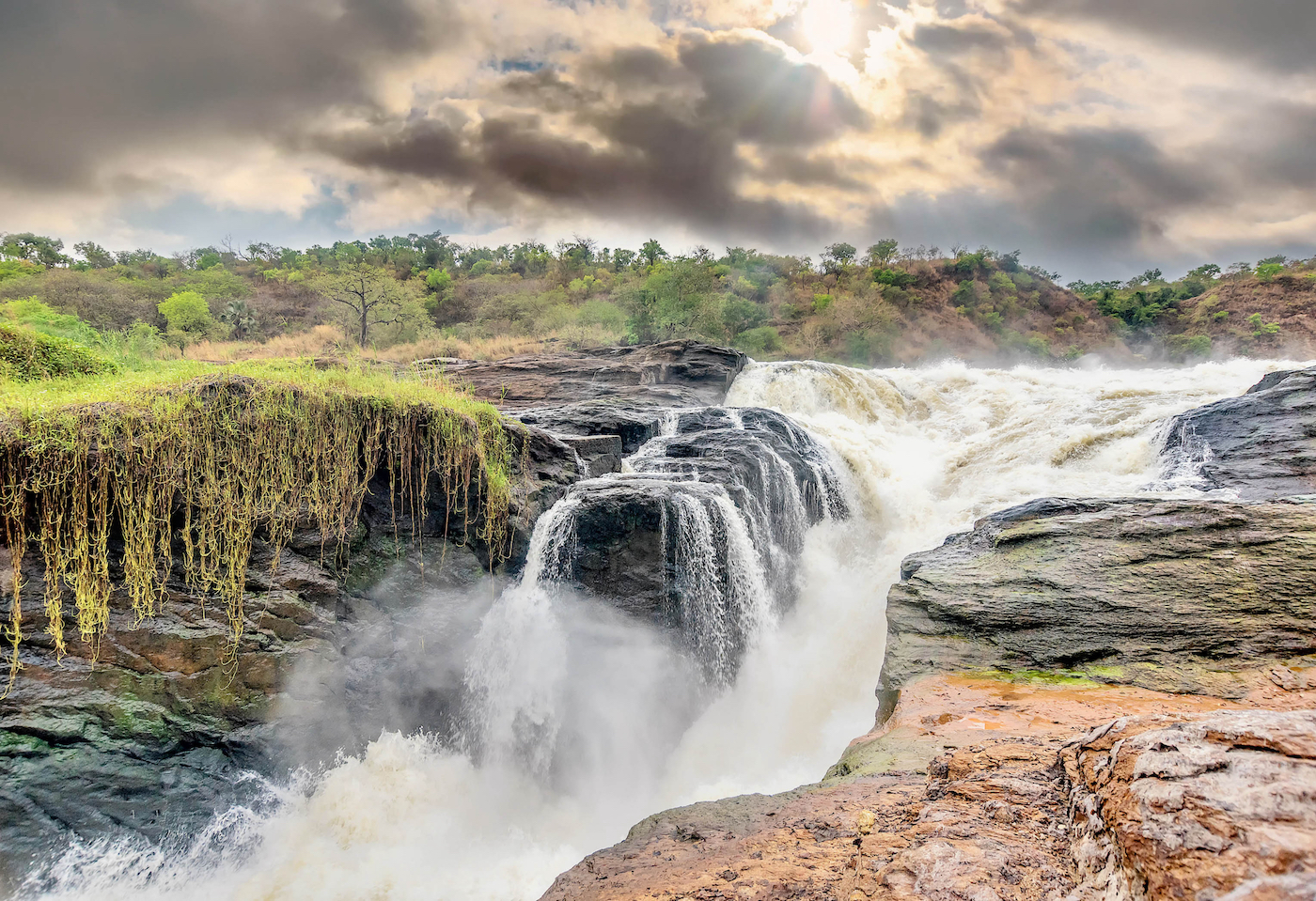
Like most of East Africa, the period of March through to May is the rainy season. The park becomes less accessible and most of the lodges are clos during these months so staff can go home to their families, or the lodge can undergo some renovation work.
The best regions for Uganda Gorilla Chimp Trekking
Queen Elizabeth National Park
Here, you can trek chimpanzees at Kalinzu Forest in Queen Elizabeth National Park. A park sitting on the Equator and famous for its tree-climbing lions
Founded in 1952, the Queen Elizabeth National Park is located in western Uganda. It is formed of a variety of ecosystems homes. This is just under 100 mammal species and over 600 bird species. As a result, for obvious reasons, is often included in a Uganda itinerary. Vast savannahs, lush forests, glistening lakes and fertile wetlands make it the perfect home. This is for elephant, buffalo, lion, chimpanzees and hippo in particular.
History of Queen Elizabeth NP
The park was originally Kazinga National Park but after a visit by Queen Elizabeth II. The name was change to Queen Elizabeth National Park. Another interesting fact is that the park spans the equator line. A monument sits on either side of the road. This is to mark the exact spot where it crosses latitude 0.
As if the park was not beautiful enough, the jagged Rwenzori Mountains are the backdrop to much of the park. Other features include of the park include the Kazinga Channel, the Katwe crater, Lake Edward, the Papyrus Swamps and the Ishasha River. These different ecosystems enable a varied safari experience, game drives and walks from your accommodation.
Ishasha Sector
The remote Ishasha sector, in the southern part of the park, is famous for its tree-climbing lions. These lions enjoy spending hot afternoons snoozing up fig trees, are the most memorable sight in the entire park.
Queen Elizabeth National Park does not only provide fantastic wildlife experiences and sightings. It also has a rich cultural background too. There are many opportunities for tourists to meet up with the local communities and be part of cultural activities. These include traditional dances, storytelling moments, and listening to traditional music. Community projects are also available to visit. They can usually be through the lodge you are staying in, or through your tour operator beforehand.
When is best to visit Queen Elizabeth National Park
Like many of Uganda’s destinations, one can go to the park at any time of the year. But the best experience, in terms of the game, is between the months of June and September. The months of December to January are also good times to go. This is because these are the dry seasons so the wildlife is more reliable. As it tends to congregate around the permanent water sources.
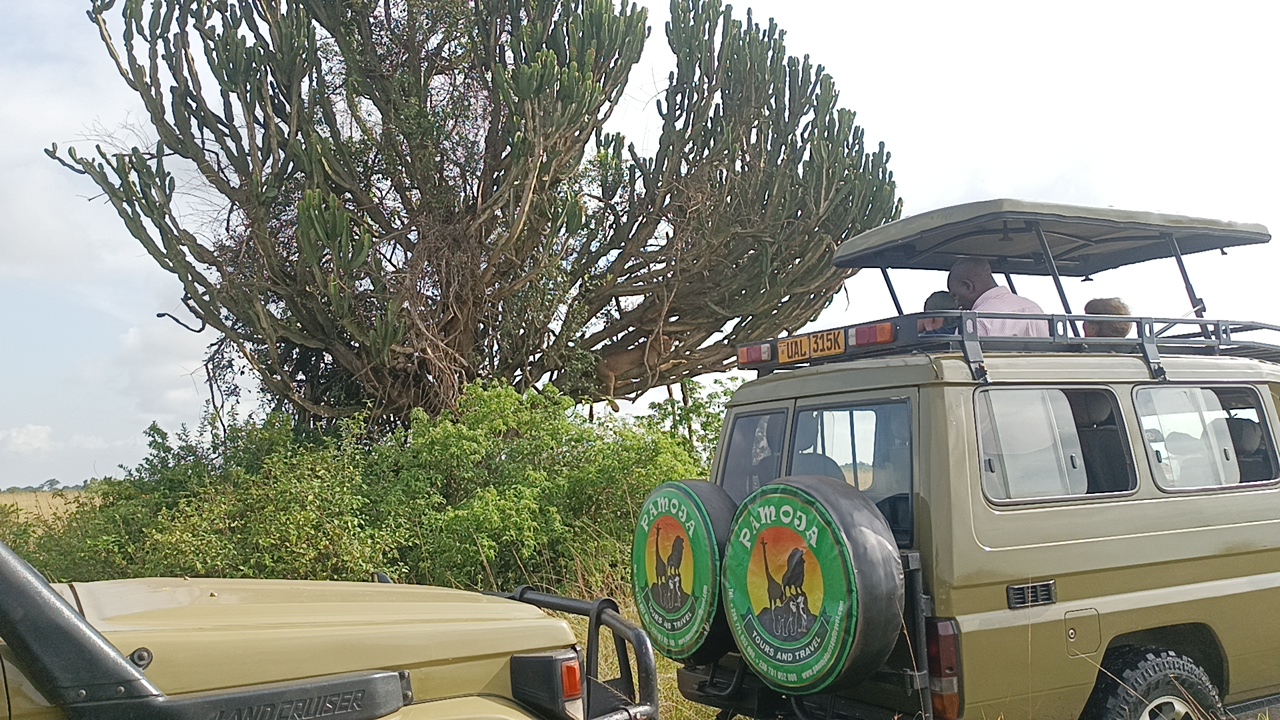
The park is easy to combine with other destinations in Uganda. These include gorilla trekking in Bwindi, chimpanzee trekking in Kibale Forest. Also, flying up to Murchison Falls in the northern region of Uganda.






